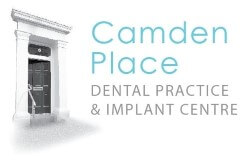Dental Extractions (Tooth Removals)
Dental Extractions - Tooth Removal
When it comes to dental procedures, tooth extraction — or having teeth “pulled” — is among patients’ most dreaded prospects.
Therefore, before we consider extraction, every effort will be made to try to repair and restore your tooth. However, sometimes a tooth extraction is necessary.
Reasons for Tooth Extraction
- Severe Tooth Damage/Trauma: Some teeth have such extensive decay and damage (broken or cracked) that repair is not possible. For example, teeth affected by advanced gum (periodontal) disease may need to be pulled.
- Malpositioned/Non-functioning Teeth: To avoid possible complications that may result in an eventual, negative impact on oral health and/or adjacent teeth, these non-functional teeth are removed. These teeth – usually wisdom teeth – are poorly positioned and/or essentially useless (teeth that have no opposing teeth to bite against).
- Orthodontic Treatment: Orthodontic treatment, such as braces, may require tooth extraction to make needed space for improved teeth alignment.
Commonly Extracted Teeth – Wisdom teeth
Wisdom teeth removal is one of the more common categories of tooth extraction. One problem that occurs with wisdom teeth development is that it becomes an impacted tooth that has surfaced and has no room in the mouth to grow. Other problems associated with impacted teeth include infection, decay of adjacent teeth, bite interference and gum disease.
Types of Tooth Extractions
- Simple Extractions: These are performed on teeth that are visible in the mouth. Most of these extractions are usually done under a local anaesthetic, with or without anti-anxiety medications or sedation.
- Surgical Extractions: These involve teeth that cannot easily be seen or reached in the mouth, either because they have broken off at the gum line or they have not fully erupted. This involves some bone removal, removing and/or lifting and folding back all or part of the gum tissue to expose the tooth, or breaking the tooth into pieces to ease the tooth out.
These types of extractions can be done with local anaesthesia and/or sedation.
Tooth Extraction Aftercare
Since bleeding is normal after an extraction, you will have to bite on a piece of gauze for about 45 minutes to put pressure on the area and allow the blood to clot. Some swelling and discomfort are normal after a tooth extraction.
Cold compresses or ice packs can help decrease the swelling. If your jaw is sore and stiff after the swelling dissipates, apply warm compresses.
Sleeping with your head face upward to relieve pressure on the jaw, and keeping your head elevated with extra pillows also may help. In addition, an over-the-counter pain reliever such as ibuprofen (such as Nurofen) of Paracetamol can be used for several days after extraction.
Tooth extraction aftercare tips:
- Do not rinse your mouth for the first 24 hours immediately following a tooth extraction.
- Stick to a soft or liquid diet (milk, ice cream, mashed potatoes, pudding) the day of and the day after a tooth extraction, gradually progressing to eating other easy-to-chew foods. Chew with teeth that are far from the extraction site.
- Brush and floss the other teeth as usual, but avoid the teeth and gum next to the extraction socket.
- After the first 24 hours, for at least five days after extraction, gently rinse the socket with warm salt water (1/2 teaspoon of salt in a cup of water) after meals and before bed.
Things to Avoid After Tooth Extraction
In addition to the aforementioned aftercare considerations, tooth extraction aftercare also involves avoiding certain foods and activities.
- Avoid anything that might dislodge the blood clot and delay or prevent normal healing.
- Do not smoke, vigorously rinse or spit, engage in strenuous activities, or drink through a straw for at least two days after an extraction.
- Brush and floss the Stay away from hot liquids, foods that are crunchy or contain seeds or small grains, alcohol, and carbonated soft drinks for two to three days after tooth extractions.teeth as usual, but avoid the teeth and gum next to the extraction socket.
- Do not brush your gums or use an over-the-counter mouth rinse (you can use homemade water-and-salt washes).
Dry Socket After Tooth Extraction
Dry socket, a common complication after a tooth extraction, occurs when a blood clot has failed to form in the socket, or the blood clot that did form has been dislodged. This leaves the underlying bone and nerves exposed to air and food. Often quite painful, dry socket typically appears two to five days after extraction and can cause a bad odor or taste.
Dry socket is most frequently associated:
- Difficult or traumatic tooth extractions
- People over the age of 30.
- Poor oral hygiene habits.
- Women (particularly those taking oral contraceptives).
Unless there is an emergency, experts recommend that women using oral contraceptives schedule their extractions during the last week of their menstrual cycle, when oestrogen levels are lower.
In most cases, if you develop dry socket, a medicated dressing can be placed into the socket to soothe the pain and encourage healing.
Healing Time After a Tooth Extraction
Healing from a tooth extraction takes about five to seven days. The gum area should be fully healed in three to four weeks and the bony socket under the gum takes several months to fully heal.
